4 differences between anchorage force and pullout resistance
Time:2023-12-20From:sinorock View:
In the intricate world of structural engineering, the concepts of anchorage force and pullout resistance are pivotal to ensuring the stability and integrity of various structures. Anchorage force, the binding force of anchor bolts on surrounding rock, is a dynamic and essential element that plays a proactive role in supporting the deformation and expansion of the surrounding rock. On the other hand, pullout resistance is the ultimate load a bolt can bear during a pull-out test, preventing it from dislodging from the rock.Explanation of Anchorage Force and Its Importance in Structural Stability
Anchorage force, often categorized as working anchorage force and design anchorage force, serves as the bedrock of structural stability. Working anchorage force, a subset of anchorage force, restricts the deformation of surrounding rock, offering an initiative support role that adapts to the dynamic changes in the rock's behavior. This force is crucial in ensuring the structural components are held securely in place, preventing any compromise in stability caused by the movement of surrounding rock.
Explanation of Pullout Resistance and Its Role in Preventing Failure of Fasteners or Anchors
Pullout resistance, on the other hand, acts as a safeguard against structural failure by preventing the anchor bolt from pulling out of the rock. This force is a fixed value that remains constant, irrespective of the surrounding rock's deformation or the force applied to the anchor bolt. The pullout resistance is a critical parameter in determining the anchor bolt's ability to withstand external forces and is tested through rigorous pull-out tests during both construction and destructive testing phases.

Comparison of Anchorage Force and Pullout Resistance in Terms of Definition and Measurement
1. Nature and Purpose
- Anchorage force actively supports the deformation of surrounding rock, adapting to dynamic changes.
- Pullout resistance is a fixed value that prevents the anchor bolt from dislodging and reflects the load the anchor can bear during a pull-out test.
2. Measurement Tools
- The rock-bolt dynamometer measures anchorage force and is installed simultaneously with the anchor bolt.
- Pullout resistance is assessed using a bolt tension meter after the anchor bolt installation.
Discussion of the Factors That Affect Anchorage Force and Pullout Resistance
Understanding the factors influencing anchorage force and pullout resistance is imperative for precise structural design and construction:
1. Surrounding Rock Properties
- Anchorage force is influenced by the deformation and expansion of surrounding rock.
- Pullout resistance remains constant regardless of surrounding rock behavior.
2. Installation Techniques
- Proper installation techniques are crucial for accurate measurement of both anchorage force and pullout resistance.
3. Material Strength
- The strength of the anchor bolt, hollow bar, and bonding material directly affects both anchorage force and pullout resistance.
Importance of Understanding the Differences Between Anchorage Force and Pullout Resistance in Engineering and Construction
1. Quality Assurance
- Anchorage force monitoring ensures the ongoing stability of the anchor bolt during its service life.
- Pullout resistance testing validates the effectiveness of the rock bonding and anchoring agent, providing insights into construction quality.
2. Safety and Reliability
- Anchorage force prevents structural deformations, ensuring the safety and reliability of the structure.
- Pullout resistance guarantees that the anchor bolt can withstand the designed load without compromising structural integrity.
Conclusion
In the ever-evolving landscape of engineering and construction, the distinctions between anchorage force and pullout resistance are instrumental in achieving structural excellence. Balancing the dynamic nature of anchorage force with the steadfastness of pullout resistance ensures that structures are not only resilient against external forces but also maintain their stability over time. Engineers and construction professionals must integrate a comprehensive understanding of these forces into their design and testing processes, setting the stage for robust, enduring structures that stand the test of time. By recognizing and harnessing the unique attributes of anchorage force and pullout resistance, the industry can continue to push the boundaries of structural innovation and safety.
As the leading expert in the ground support industry, the Sinorock team has years of experience providing complete geotechnical service. If you have any needs or questions about the self-drilling anchor bolt system and its application, please feel free to contact us at sinorock@sinorockco.com.
latest news
-
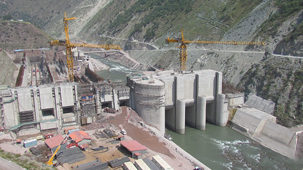
- What Are the Applications of SDA Bolts in Hydropower Stations?
- Time:2025-08-21From:This Site
- Learn how self-drilling anchor bolts enhance slope stability, tunnel support, and dam reinforcement in complex geological conditions at hydropower stations. Optimize hydropower projects with efficient, cost-effective, and eco-friendly solutions.
- View details
-
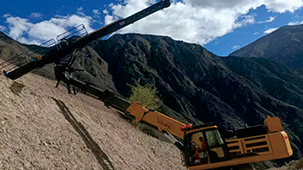
- Slope Stabilization with SDA Bolts: Benefits & Applications
- Time:2025-08-19From:This Site
- Discover how self-drilling anchor bolts (SDA bolts) provide superior slope stabilization for highways, railways, and tunnels. Learn their key benefits, installation process, and real-world applications in loose or collapsible soils.
- View details
-
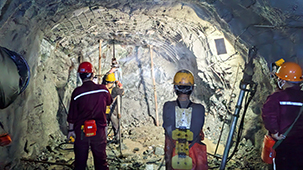
- How Self-Drilling Rock Bolts Enhance Tunnel Support in Fractured Rock?
- Time:2025-08-15From:This Site
- Discover how self-drilling rock bolts enhance tunnel support in fractured rock. Learn their benefits, installation steps, and real-world applications for safe, efficient tunneling.
- View details
-
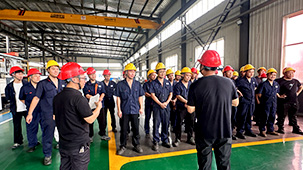
- Sinorock 2025 Quality Month | Strengthening Quality Foundations, Empowering Product Excellence
- Time:2025-08-13From:This Site
- Sinorock’s 2025 Quality Month, themed “Strengthening Quality Foundations, Empowering Product Excellence,” successfully concluded, reinforcing our commitment to superior product quality.
- View details
-
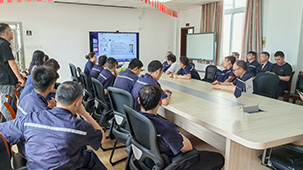
- Sinorock Safety Month 2025 | Everyone Speaks Safety, Everyone Can Respond
- Time:2025-07-03From:This Site
- Sinorock Safety Month 2025, centered on the theme "Everyone Speaks Safety, Everyone Can Respond - Spot Workplace Hazards," has wrapped up successfully!
- View details
-

- Quality Control: the Vital Factor of A SDA Bolt Factory
- Time:2025-01-09From:This Site
- Sinorock’s comprehensive quality control system, from supplier management to outgoing inspections, ensuring the highest standards for self-drilling anchor bolts in construction.
- View details
-

- Sinorock Invites You to Explore Proven Self-Drilling Anchor Bolt Solutions at bauma 2025
- Time:2025-03-07From:This Site
- From April 7–13, 2025, explore Sinorock’s Self-drilling anchor bolt solution at Booth C2.513/4 in Hall C2 of the Messe München Exhibition Center (Munich, Germany).
- View details
-
.jpg)
- SINOROCK to Attend EXPOMINA PERÚ 2024 in Lima, Peru
- Time:2024-08-10From:This Site
- Sinorock to Attend EXPOMINA PERÚ 2024 in Lima, Peru
- View details
-
.jpg)
- SINOROCK to Participate in MINING AND METALS CENTRAL ASIA 2024
- Time:2024-08-08From:This Site
- SINOROCK to Participate in MINING AND METALS CENTRAL ASIA 2024
- View details
 Download
Download 


